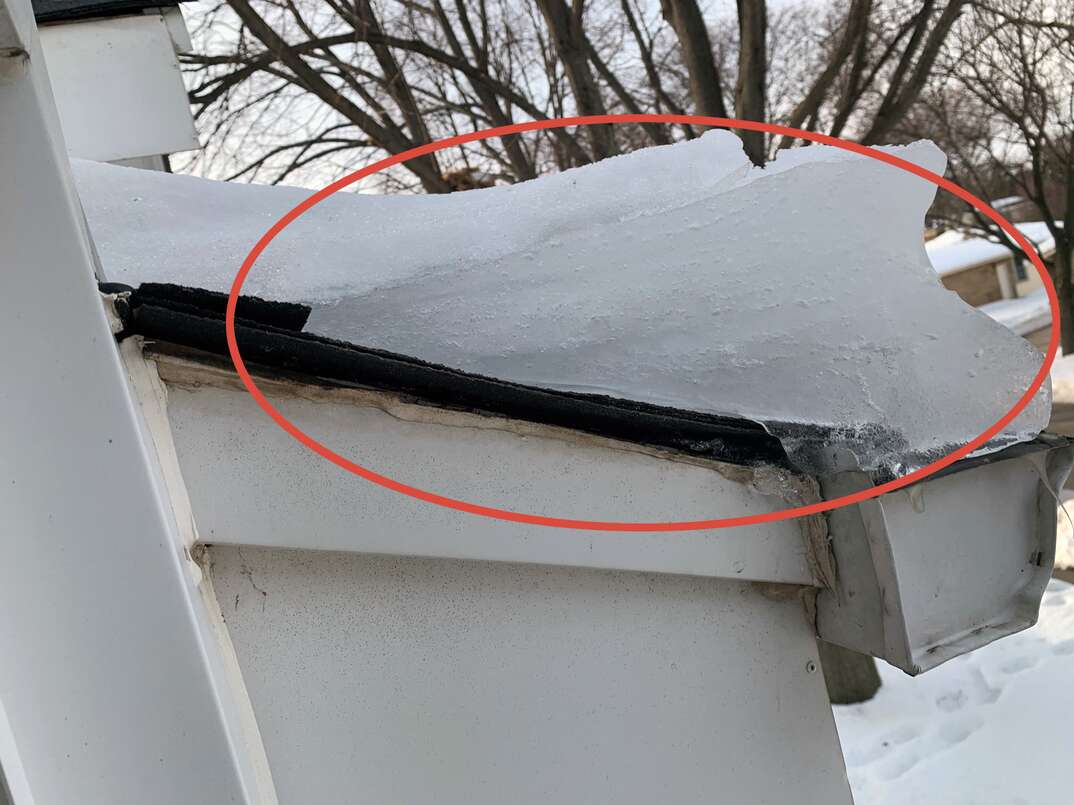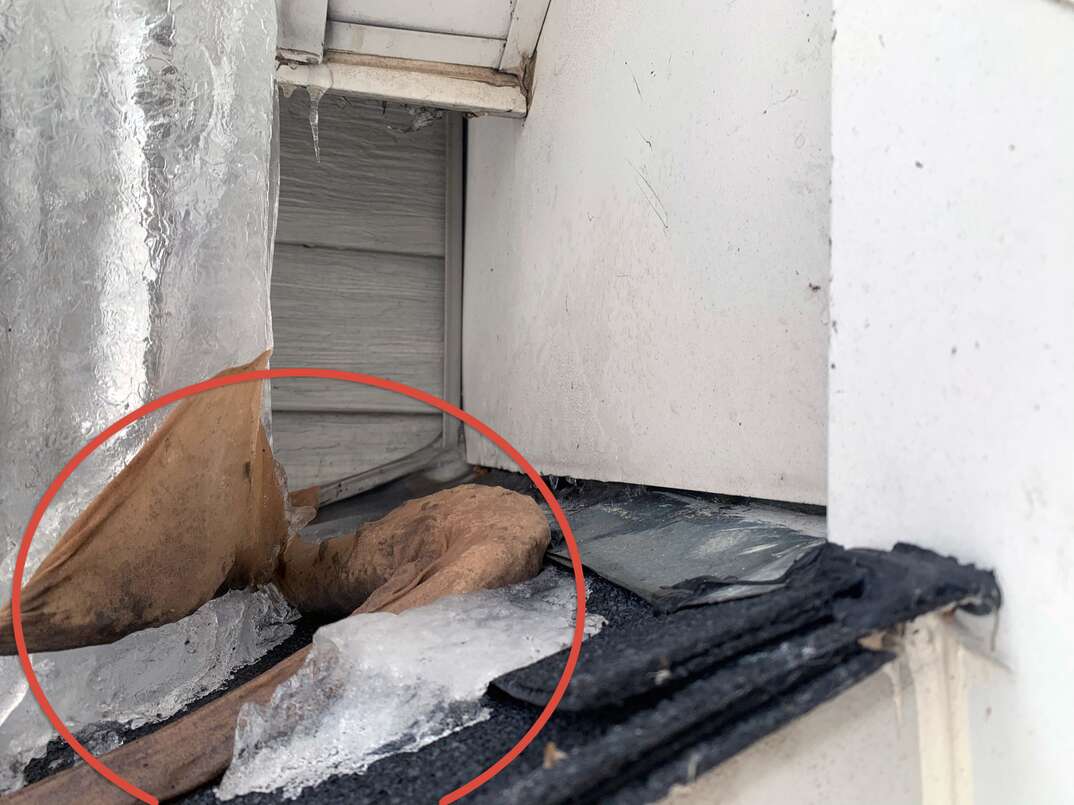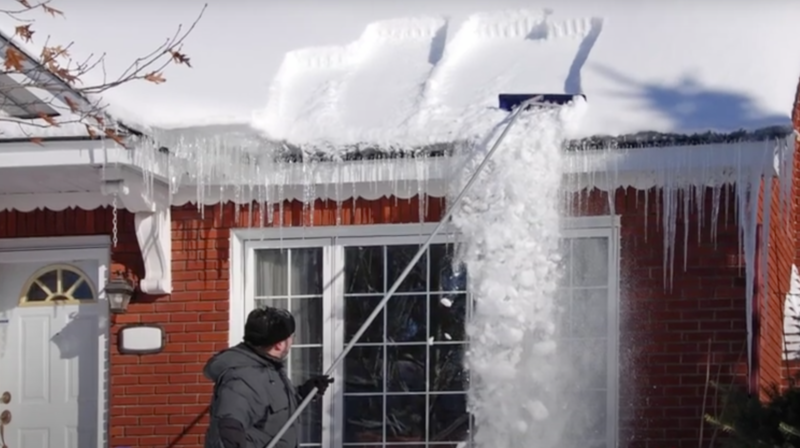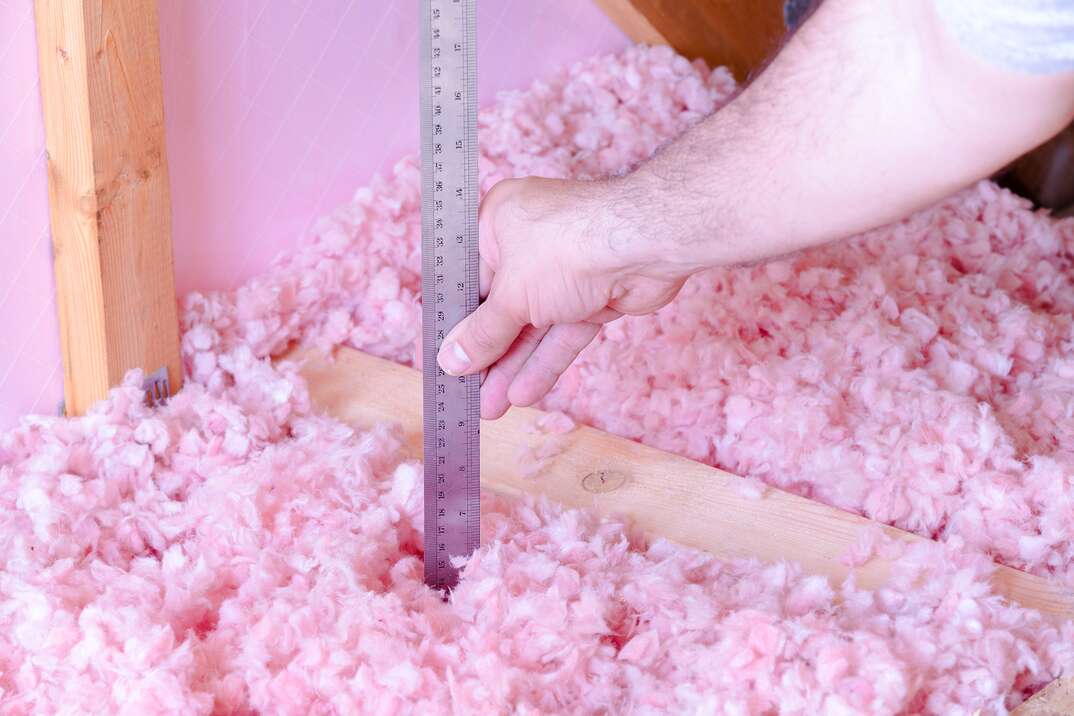Frozen Gutters be Dammed! 6 Ways to Eliminate Ice Dams

Winter can be a challenging time for homeowners, especially in climates where below-freezing temperatures are the norm. The damaging effects of extreme winter weather on your home can present themselves in myriad ways. Icy wind can topple trees and branches, frigid temperatures can cause pipes to freeze, and snow on the ground near your home for extended periods can even cause mold and rot problems. One of the most frustrating winter weather challenges for homeowners is frozen gutters and downspouts.
This May Also Interest You: What Is the Average Downspout & Gutter Installation or Replacement Costs?
Frozen gutters and downspouts create a host of potentially long-lasting effects. The weight of ice in a gutter can pull the gutter away from the house, causing permanent damage to your roof and siding. Furthermore, ice-clogged gutters — or ice dams — can lead to major moisture problems. Melting snow on the roof will have no place to travel and can eventually cause water to travel up beneath the shingles, leading to the potential for leaks and mold growth.

In short: Frozen gutters can be more than a just nuisance, and they're a downright pain in the neck to alleviate. But if you find yourself in this unfortunate situation, there are a few proven methods for clearing them out and getting them back in working order.
Here are six ways to get your frozen gutters flowing again:

1. The Stocking Method
One popular technique for thawing ice dams is what is known as the stocking method. It involves using calcium chloride to aid in the melting of the ice. Calcium chloride is the same ice-melting chemical compound that's sprinkled on roads and sidewalks during the winter months.
Avoid directly sprinkling calcium chloride on the ice in your gutters, as it could stain your shingles and corrode the aluminum of your gutters. Instead, fill stockings or long socks with the compound and lay the socks on top of the ice-clogged gutter. You'll need to fill enough stockings to line the length of your gutters in order to create a channel through the ice in which water can flow and keep your gutters operable.
2. Hot-Water Method
Another method for removing ice dams in your gutters is to simply use hot water to melt the ice. While not a long-term solution, this option can deliver fast results. For minor ice blockages, use a ladder to climb up next to your gutters and pour hot water along the entire length of them, as well as into the opening of the downspout.
For larger ice dams, you'll need to find a way to run a sustained stream of hot water through your gutters. This can pose a significant challenge for most homeowners, so for bigger blockages, you may be better off hiring professionals to come thaw your gutters.

3. Rake Method
Upon discovering that you've got a giant block of ice clogging your gutter, you might be ready to head up the ladder with a hammer in hand, armed and ready to start smashing. Although that may be tempting, it's also a surefire way to cause permanent damage to your gutters and roof — not to mention it's downright dangerous.
Instead, use a long-handled aluminum roof rake to clean the ice out of your gutters. These rakes are specifically designed to remove leaves and other debris from roofs. Raking the ice will not only clear it, but it can change the exterior temperature of the roof and prevent further buildup, as you'll be exposing the underlying shingles to the sun's rays.

4. Remove Debris
More than any other method, the best way to keep ice from clogging your gutters is to prevent it from happening in the first place. As part of the regular maintenance of your home, ensure that you're keeping your gutters clear of leaves and debris. Ice dams are exacerbated by dirty gutters because water flow is obstructed and, thus, more prone to freezing. Cleaning or installing gutter guards can help prevent debris buildup from occurring to begin with.

5. Attic Insulation
Another way to prevent ice dams from forming is to make sure your attic is properly insulated and sealed. If you have heat escaping from a certain spot in your attic, it can create the conditions for ice dams to form. The heat escaping will cause snow and ice to melt off the roof and travel down the roof into your gutter, where it can turn back into ice.
Although it can be challenging to identify these spots on your roof, the reward is definitely worth it. Not only can you prevent ice dams, but you could also lower your home's energy costs.
More Related Articles:
6. Leave It to the Pros
Preventing ice dams from occurring is perhaps the safest, most effective way to deal with this wintertime nuisance. With proper care and maintenance, the majority of ice dams can be avoided. However, if you do end up with a frozen gutter problem, try one of the methods listed above.
But, while these methods can be effective, calling for professional help is always an option for preventing damages to your house — and yourself. Winter weather can bring with it a host of headaches for homeowners, but with proper prevention and care you can help mark frozen gutters off your list of winter woes.
Winter weather can be truly hard on a home, but you can be prepared with a plan from HomeServe. Once you have a plan in place and a covered issue arises, you can simply call the 24/7 repair hotline. A local, licensed and highly trained contractor will be sent out to you to get the job done to your satisfaction. Learn more about plans from HomeServe today.


